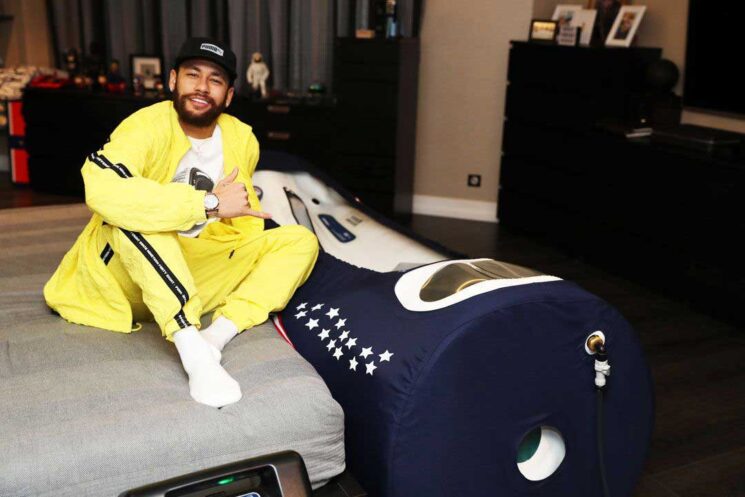Hyperbaric Oxygen Therapy (HBOT) is increasingly capturing the attention of non-professional athletes. Traditionally used in medical contexts, this therapy involves breathing pure oxygen in a pressurized environment. Its potential benefits for recovery and performance enhancement have caught the eye of athletes outside the professional sphere. This blog post aims to delve into what HBOT is, its growing appeal among amateur athletes, and offer 10 insightful tips for those contemplating its use. By understanding HBOT’s applications, benefits, and considerations, non-pro athletes can make informed decisions about incorporating this therapy into their training and recovery regimens.
What is Hyperbaric Oxygen Therapy (HBOT)?

Hyperbaric Oxygen Therapy, or HBOT, is a treatment that involves breathing pure oxygen in a chamber with increased atmospheric pressure. This method significantly enhances the amount of oxygen your blood carries, potentially accelerating healing processes and improving bodily functions. Originally used for medical conditions like decompression sickness and chronic wounds, HBOT has found a new audience in the sports world. Athletes are turning to HBOT and outlets such as oxyhelp.com for their potential benefits in speeding up recovery from injuries, reducing inflammation, and enhancing overall athletic performance. This therapy offers a unique approach by using oxygen as a tool to boost physiological processes.
The Popularity of HBOT Among Athletes
HBOT’s popularity has soared among professional athletes for its potential in boosting performance and expediting injury recovery. This trend has created a ripple effect, piquing the interest of non-professional athletes. With increasing evidence supporting its benefits, amateur sports enthusiasts are exploring HBOT as a means to enhance their training outcomes and recovery efficiency. The therapy’s growing accessibility has enabled a wider range of athletes to experience its potential benefits, making it a topic of interest not just in professional sports, but also in local gyms and athletic communities.
Tip 1: Understand the Benefits of HBOT
For non-pro athletes considering Hyperbaric Oxygen Therapy, it’s vital to understand its potential benefits. HBOT is believed to enhance recovery speed, reduce inflammation, and potentially improve overall athletic performance. It works by increasing oxygen delivery to tissues, which can accelerate the healing process and reduce recovery time from injuries. Additionally, the therapy is thought to stimulate the formation of new blood vessels, which can improve circulation and oxygenation of tissues. This can lead to enhanced endurance and stamina, making it an attractive option for athletes looking to push their limits and improve their training results.
Tip 2: Consult with a Medical Professional

Before embarking on HBOT, it is crucial for non-professional athletes to consult with a healthcare provider. This step ensures that HBOT is a suitable option based on individual health conditions and athletic goals. A medical professional can assess whether the therapy aligns with your specific needs and can help identify any potential risks or contraindications. This consultation also provides an opportunity to discuss any underlying health issues that might affect or be affected by HBOT. Ensuring that the therapy is safe and appropriate for your unique situation is key to reaping its benefits effectively.
Tip 3: Choose a Certified HBOT Facility
Selecting a certified HBOT facility is essential. It’s important to avoid DIY or home-based HBOT setups, as they might not meet safety and efficacy standards. Certified facilities have properly maintained equipment and trained staff, ensuring a safe and effective treatment experience. Researching and choosing a reputable facility also means you’ll receive guidance and monitoring from professionals who understand the nuances of HBOT. This can make a significant difference in the safety and effectiveness of your treatment, providing you with the best possible outcome.
Tip 4: Understand the Treatment Process
Understanding what a typical HBOT session involves is crucial. Sessions typically last around 60 to 90 minutes, during which you breathe pure oxygen inside a pressurized chamber. The pressure levels and duration of treatment can vary based on the facility and your specific needs. It’s also important to be aware of potential side effects, such as ear discomfort due to pressure changes, and to follow safety precautions recommended by the facility. Knowing what to expect during and after the therapy helps in preparing mentally and physically for the experience.
Tip 5: Set Realistic Expectations

Setting realistic expectations about HBOT outcomes is important. While many athletes report positive effects, it’s essential to understand that results can vary. The therapy might not yield immediate or dramatic improvements for everyone. It’s a process that may require multiple sessions over a period of time to observe noticeable benefits. Additionally, HBOT should not be viewed as a standalone solution but as part of a broader approach to health and athletic performance. Keeping expectations in check helps maintain a balanced perspective and avoids potential disappointment.
Tip 6: Complement with Proper Nutrition and Training
HBOT should be part of a holistic approach to health and athletic performance. It’s important to maintain a balanced diet and regular training routine. Proper nutrition fuels your body, supports recovery, and enhances the benefits of HBOT. Similarly, a consistent training routine helps you maximize the potential performance improvements from the therapy. Combining HBOT with these elements can lead to more significant and sustainable improvements in your athletic performance and overall health.
Tip 7: Monitor Progress and Adjust

Keeping track of changes in health or performance after starting HBOT is crucial. Monitoring progress helps in evaluating the therapy’s effectiveness. It also allows for adjustments in your treatment plan, if necessary. Regular communication with your healthcare provider about your experience with HBOT and any changes in your condition is essential. This collaborative approach ensures that your HBOT experience is tailored to your evolving needs and goals, maximizing its potential benefits.
Tip 8: Be Cautious of Misleading Claims
Be wary of exaggerated or unverified claims about HBOT. While HBOT has shown potential benefits, it’s important to rely on credible, scientifically backed information. Seek out reliable sources and avoid being swayed by sensational claims. This critical approach helps in making informed decisions about your health and athletic performance, avoiding potential pitfalls and unrealistic expectations.
Conclusion
Hyperbaric Oxygen Therapy offers intriguing possibilities for non-professional athletes seeking to enhance recovery and performance. Understanding its benefits, choosing the right facility, and setting realistic expectations are key to a successful experience. Remember, consultation with medical professionals and a holistic approach involving proper nutrition and training are essential. By being informed, cautious, and proactive in monitoring progress, non-pro athletes can explore the potential benefits of HBOT safely and effectively.

